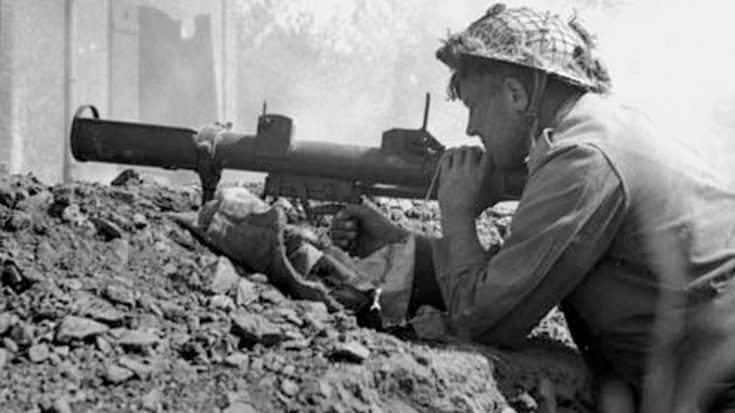The Serious Problem With Britain’s Vicious Anti-Tank Weapon

Warfare History Network
PIAT.
World War II introduced many destructive weapons into the realm of military combat but it also improved upon many existing ones. Tanks which were never the most reliable of vehicles during WWI became the mainstay of the German Blitzkrieg in WWII. To counter the looming threat of tank warfare the Allied Forces needed proper anti-tank weaponry, such as The Projector Infantry Anti-Tank (PIAT).
There were many ways that infantry units could take down a tank with relative ease, Americans had the bazooka, Germans had the Panzerfaust, the Polish had the Molotov Cocktail and the British had the PIAT. The British Army began using this weapon in 1943 to combat panzer divisions and anti-tank rifles weren’t cutting it so they developed the PIAT. This anti-tank weapon was essentially a tube with a very strong spring which could launch an explosive at enemy tanks. However, there were some drawbacks to using this weapon that the British Army soon found out.
“The range is about 50 yards and no more. You’re a dead loss if you try to go farther. Even fifty yards is stretching it, very much so. Another thing is that you must never, never miss. If you do, you’ve had it, because by the time you reload the thing and cock it, which is a bloody chore on its own, everything’s gone, you’re done. It’s indoctrinated into your brain that you mustn’t miss.”
– Seargent M.C. Thornton
Soldiers found that the PIAT was highly inaccurate as well as being difficult to load on the first shot due to the spring loading mechanism. It was often said that anyone who could successfully load a PIAT deserved a medal.
“The PIAT is actually a load of rubbish, really.”
– Seargent M.C. Thornton
Several weapons historians take a look at the PIAT in this clip from Weaponology.


















